Primary Source Set
Jim Crow South: Life in North Carolina 1930’s-1950’s
Following the long history of enslavement and the resulting Civil War, states within the U.S. adopted racist and segregationist policies that became known as Jim Crow laws. The years that these laws were in place (starting in 1865 through 1968) came to be known as the Jim Crow era. This assortment of newspapers, photographs, oral histories, and other types of documentation describes the lived experiences of people in North Carolina during Jim Crow from the 1930’s to the 1950’s.
Proceed with caution and care through these materials as the content may be disturbing or difficult to review. Specifically, there are mentions and descriptions of racist and white supremacist violence and murders, oppression based on race, racist and white supremacist language, and offensive former race labels. Please read DigitalNC’s Harmful Content statement for further guidance.
Time Period
1930's-1950's
Grade Level
Undergraduate
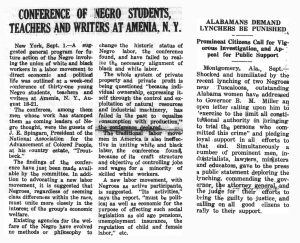
Africo-American Presbyterian. (Wilmington, N.C.) [9/7/1933]
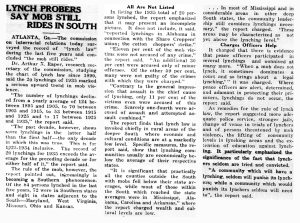
“Lynch Probers Say Mob Still Rides In South” Cherokee scout. (Murphy, N.C.) [4/30/1936]
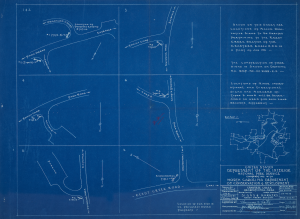
Signs and Markers Reedy Creek Section
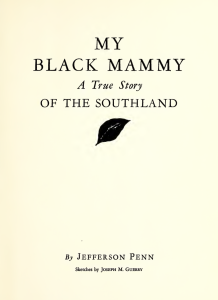
My Black Mammy: A True Story of the Southland
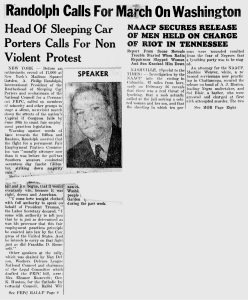
“Randolph Calls for March on Washington” - The Carolina times. (Durham, N.C.) [3/9/1946]
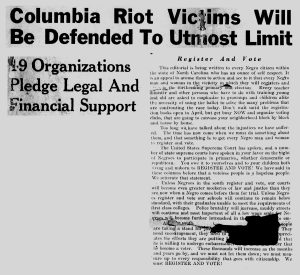
The Carolina times. (Durham, N.C.) [3/23/1946]
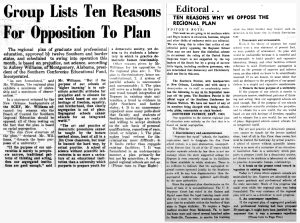
The Carolina times. (Durham, N.C.) [9/17/1949]
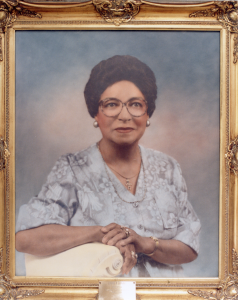
Emma Louise Perry Boyer [Deceased]

Bernice Sills Britt Oral History Interview [January 29, 1996]
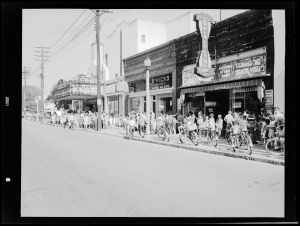
Center Theater
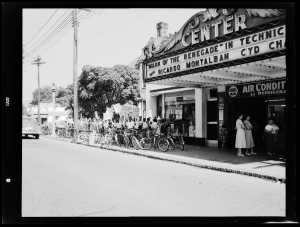
Center Theater
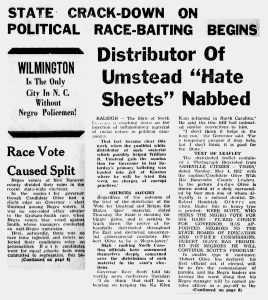
The Wilmington journal. (Wilmington, N.C.) [6/7/1952]

The Carolina times. (Durham, N.C.) [2/9/1952]
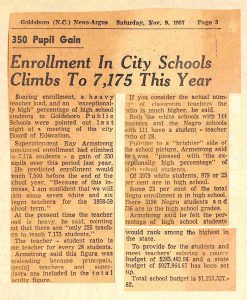
History of Goldsboro City Schools [1937-1955]
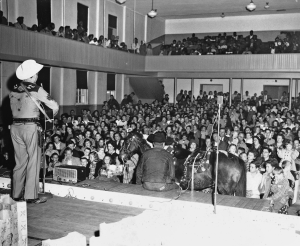
Fred Kirby Visits Cooleemee
Background
The Advent of Slavery in the United States
Slavery had become a global institution with the rise of colonialism and the ideology of distinct races; a chosen hierarchy accompanied this construct, now known as white supremacy, and was used to justify the violence enacted through colonization. As the now named Americas were colonized, enslaved people from Africa began to be brought to the colonies during the early 1600’s, and the practice of slavery grew exponentially from this point.
Slavery was a strongly held American institution until the idea of abolition began to gain more widespread support in the early and mid-1800’s. Many people had been strongly advocating against the violent practice of slavery and undermining its power over enslaved people since its inception, and the 1800’s saw a culmination of these efforts. Regardless of the motivations, whether moral or economic, the reality of abolition became clear and a Civil War (1861-1865) resulted between the industrial Northern states within the Union and the Southern states, which held most of the enslaved population and, consequently, those that most directly profited from the continued practice of slavery.
Post-Civil War Reconstruction
After the Emancipation Proclamation (1863) issued by president Lincoln declaring the end of slavery and then the Union’s victory in the Civil War (1865), the Reconstruction period began in the South to rebuild and restructure the post-war region, circa 1865-1877. The 13th amendment was ratified into the Constitution and officially prohibited the practice of slavery within the United States. However, the legacy of slavery and racism persisted; its influence could be found in the language of the 13th amendment that abolished slavery (except for slavery in the form of being incarcerated), in the newly created laws that continued white supremacist ideology, and in the everyday actions and anti-Black beliefs held by individuals throughout the country.
“Jim Crow”
The term ‘Jim Crow’ came from the phrase coined by a popular song used in minstrel shows, which were performances centered on mocking African Americans. This is also where the act of Black-face gained popularity. The racist phrase ‘Jim Crow’ became the name given to the era of repression and segregation in the United States marked by racist and segregationist laws. It prohibited non-white people from certain areas or from engaging in certain activities (e.g. drinking from separate water fountains or only being allowed to sit in designated sections of public venues). More discreet laws were implemented discriminatorily, like requiring a poll tax or written test in order to vote. This began primarily after the Reconstruction period in response to the increased participation of Black people in the community and politics, especially with the success of Black politicians in being elected in Southern states.
These laws were in place throughout the country, not only the South, although the South’s history with slavery and resentment from its abolition among politicians and former slaveholders created a hostile environment in the region. Many people began to identify certain areas as “Sundown Towns” because they knew them to be unsafe for any Black person to visit after dark. Some towns even had signs that proclaimed the entire area “for whites only,” much like those posted by businesses or on public restrooms throughout the country.
People experienced oppression both structurally through these racist laws and personally from individual people. Strongly held racist ideologies gave rise to white supremacist organizations, like the Klu Klux Klan, and spontaneous mobs that resulted in terrorizing Black people and the practice of lynchings. The reality of life throughout the South was marred by violence and oppression, and these occurrences became mostly Southern violence.
Resistance to Oppression
In response, communities began to organize and resist structural and communal oppression. Many Black communities were founded during this time due to segregation, and their exclusion from public life saw the creation of many Black-owned businesses. In North Carolina, there were multiple Black-run newspapers that reported both on the issues their community was facing and that celebrated their joys and accomplishments. For example, you could find on a front page both an update on possible desegregation of interstate transportation, as well as congratulations for the recently graduated local high school students.
While the passing of the Civil Rights Act in 1965 and the Fair Housing Act of 1968 saw the legal end of explicit Jim Crow laws, some would argue that Jim Crow persists not in law, but in the racist policies and practices still ingrained in many institutions, like under-funding historically Black communities. By exploring the documented history and the lived experiences of people during this time in North Carolina, we can understand its impacts and lasting effects on people and our communities.
Discussion Questions
The History of Lynching and Its Continuation Today
- Review the Atlanta-based report printed in this article by The Cherokee Scout. What did they mean that lynching was becoming ‘a Southern phenomenon’?*
- Read this article by the Africo-American Presbyterian. What is the significance of juxtaposing an article on efforts to bring lynch mobbers to justice with an article on the Amenia Conference calling for a collective effort for workers’ rights through an integrated labor movement?**
- Review this article for an excerpt from the Daily Record’s August 18, 1898 issue (which the Daily Record addressed the backlash from this article here) that described how white women were used as a reason to lynch Black men, and then read this paper on this history of lynching and how this history shows up in racialized violence today.
- How did the paper shed light on the Daily Record’s August 18th article excerpt and the resulting backlash the newspaper faced for addressing the false claims that were used to justify many lynchings?**
- How has white womanhood been weaponized historically (either by white women or white men) and what evidence of this can you find in the primary sources presented in this set? How do we see this being similarly weaponized today?*
- In what other ways is the history of lynching still seen today?**
- The author of the paper offers both legal and non-legal solutions for weaponizing white womanhood to enact violence on other people. Would these solutions be effective? Why or why not?**
- Are there other solutions possible to address this historic issue? What actions do you think should be taken to address the history of lynching in North Carolina?**
Reality of Voting in NC
- Now review these poll tax receipts (one and two), this voter registration list from Blowing Rock, NC, and this 1952 article regarding access to voting in NC. What do these documents tell you about the realities of voting and access to voting in North Carolina during Jim Crow*
- Do you think that access to voting was consistent across the state?**
- Based on historic methods of undermining access to voting, how do you think that legacy impacts us today? Can you find any evidence that confirms or refutes your suppositions?**
- Now review these poll tax receipts (one and two), this voter registration list from Blowing Rock, NC, and this 1952 article regarding access to voting in NC. What do these documents tell you about the realities of voting and access to voting in North Carolina during Jim Crow*
Nash County, NC
- Review this photo of Center Theater in Rocky Mount, NC, located in Nash County. What does this photo tell you about the theater?*
- In this photo, the same theater is pictured, but from a different angle. Did this photo give you more context on the theater and its policies?*
- What role did private businesses and individual people play in reinforcing Jim Crow?**
- Now review this oral history interview with Bernice Sills Britt, who lived in Castalia, NC, also in Nash County. What are the connections between her oral history and the photos of Center Theater?*
- What is the importance of preserving personal experiences like with this oral history?**
After reviewing the examples of newspaper articles from historically Black-owned newspapers and historically white-owned newspapers in North Carolina, what is the significance of having Black-run newspapers during this time?**
What do these different primary sources show you about the ideologies and attitudes of the people in North Carolina towards integration and anti-racism?*
- In these primary sources, how are the different perspectives and beliefs of North Carolinians and people broadly across the U.S. portrayed?*
What can you conclude about the reality of the Jim Crow era in North Carolina based on these sources? Do you notice any legacies of Jim Crow still in North Carolina today? Why or why not?**
* Questions that check for comprehension
** Questions that involve a “deeper dive” in conceptual and historical analysis
This primary source set was compiled by cal lane.
Updated January 2025